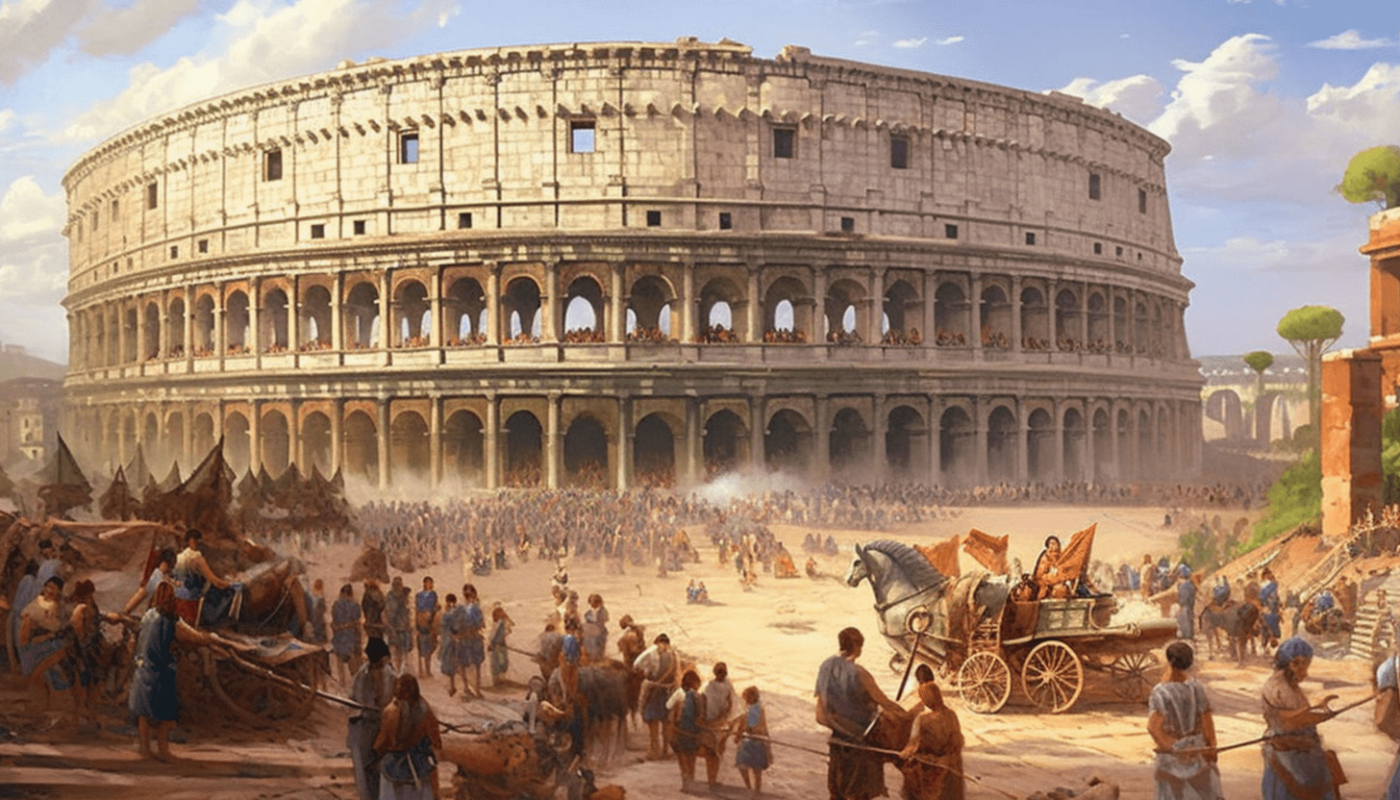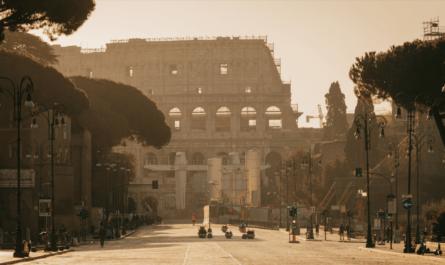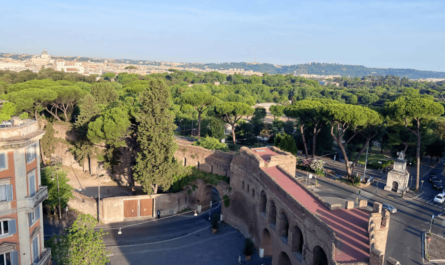Where is Rome?: You’ve been fascinated by the wonders of the Eternal City since you were young, and your dream of visiting Rome has been long-standing. Yet, a crucial question keeps you awake: Where exactly is Rome? While we know it’s in Europe, is it actually in Italy or Greece? Could Rome be part of France? What country is Rome in?
Rome is the capital city of Italy and is situated in the central Italian region of Latium (known as Lazio in Italian). Covering an area of 1,287 square kilometers (approximately 0.4 square miles), Rome stands as Italy’s largest city and ranks among the largest in Europe.
But has Rome always been as it is today? Is it close to the sea? What are the ways to get to Rome? How far is it from other cities?
In this comprehensive guide to Rome’s location, we’ll answer all your questions. We’ll explore Rome’s current position as well as its historical locations from the Roman Empire to today.
Additionally, you will learn about the distances between Rome and other major cities in Italy and Europe, including how to travel to Rome from Milan, Venice, Florence, Cinque Terre, Paris, and London.
Image: Discover Rome’s location with Fori Imperiali, among the most significant buildings of ancient Rome.
Where is Rome? Essential Information
Rome is located at geographical coordinates 41.9028° N, 12.4964° E. As Italy’s capital, it is also the capital of the Lazio region on the western coast of Italy. Latium borders the Tyrrhenian Sea, which is about 30 km away from Rome, and is surrounded by regions such as Tuscany, Umbria, Abruzzo, Molise, and Campania.
Rome’s distinctive geography is shaped by the seven hills upon which the city was originally built: Palatine Hill, Aventine Hill, Capitoline Hill, Caelian Hill, Esquiline Hill, Quirinal Hill, and Viminal Hill, with the Esquiline being the tallest and largest.
Rome’s Location in History
Foundation of Rome and Republican Age
Understanding Rome’s location requires knowing where its first settlement was. Rome’s initial urban center was on Palatine Hill, situated between the Roman Forum and the Velabrum valley. This small village, founded around 1000 BC, was surrounded by swamps.
By the 8th century BC, the settlement on Palatine Hill expanded to about 100 hectares, governed by its early patrician inhabitants.
By the mid-6th century BC, under Servius Tullius, Rome’s population grew to over 30,000, establishing it as a significant urban center. As the city grew, it expanded towards the Tiber River and the Alban Hills, incorporating Quirinal Hill as well.
During the 6th century BC, when Rome was under Etruscan rule, it became a prominent city. Its sacred center was located on Capitoline Hill, where temples to Jupiter, Juno, and Minerva were built, while the political center was situated at the base of Palatine Hill in the forum.
Between the 4th and 3rd centuries BC, Rome continued its expansion in Latium, conquering Veio and Campania after battling the Samnites. Despite resistance from other groups, Rome persisted in its conquests, further extending its territory.
As the city expanded, its administration evolved to manage the various municipalities under its control, which were independent but required military support for the Roman legions.
During the 3rd and 2nd centuries BC, Rome’s victories in the Punic Wars and other military campaigns extended its influence across the Mediterranean, including modern southern France, Sicily, Sardinia, Corsica, Spain, Macedonia, and parts of North Africa and Asia.
Where Was the Roman Empire?
With the rise of Julius Caesar and Augustus, Rome entered its imperial phase, marked by significant urban development, infrastructure projects, and cultural advancements.
After Augustus defeated Antony and Cleopatra, he became emperor and continued Caesar’s urbanization efforts, including building theaters, temples, and fortifying the city’s defenses.
At its peak, the Roman Empire extended beyond the Italian peninsula and its islands to include modern-day countries like Palestine, Iraq, Syria, Egypt, France, Austria, Switzerland, Spain, the UK, Turkey, Germany, Bulgaria, Romania, Hungary, Morocco, Algeria, Croatia, Bosnia, Serbia, Slovenia, Albania, and Greece. It also reached Portugal, Belgium, the Netherlands, Luxembourg, Liechtenstein, Montenegro, Kosovo, Cyprus, Lebanon, Armenia, Georgia, Iran, Azerbaijan, Israel, Jordan, Libya, and Tunisia, spanning three continents: Europe, Asia, and Africa.
Many of these ancient Roman territories still offer remarkable travel experiences, such as Albania’s port city of Durres and the ancient city of Apollonia.
Image: Vatican in the Papal States that governed Rome.
Rome as the Capital of the Papal Kingdom
In 380, Theodosius I established Christianity as the sole permitted religion in Rome. Following his death, his sons divided the empire, moving the capital of the Western Roman Empire to Ravenna, leaving Rome vulnerable to invasions.
The city faced invasions from the Visigoths, Vandals, and finally, the last sack of Rome in 472 by Ricimer and Anicius Olybrius. By 476, the Western Roman Empire had fallen, marking the start of the Middle Ages.
During the Papal Kingdom era, Rome underwent significant reconstruction by the popes, despite criticism for prioritizing church construction. The Papal States governed Rome from 756 until 1870 when Rome was incorporated into the unified Italy.
Initially, the Papal States controlled only Rome and its surrounding Lazio region. By the end of the 11th century, their territory expanded to include parts of southern Tuscany, Campania, and Umbria. By the 14th century, the Papal States became one of Italy’s largest states, encompassing regions like the Duchy of Spoleto, Bologna, Romagna, Parma, Piacenza, and the March of Ancona.
Rome as the Capital of Italy
Rome’s history is rich and complex, earning it the title of the Eternal City. Its storied past, filled with significant events, has shaped it into the unique city it is today.
Since 1870, after a brief period when Florence was considered, Rome has served as the capital of both the Kingdom of Italy and the Republic of Italy. It has become the vibrant, captivating, and irresistible city we know today.
How to Reach Rome
There are various ways to reach Rome, each with its own advantages.
By Plane
Flying is the most common and quickest way to get to Rome. Numerous airlines offer direct flights from Italian regions, European capitals, and major cities worldwide.
From Europe, low-cost carriers like Vueling, Ryanair, Volotea, EasyJet, and Wizz Air operate flights to Rome from cities including Barcelona, Seville, Tirana, Bucharest, Vienna, and others. Flag carriers such as British Airways, Iberia, Air France, Lufthansa, and ITA also provide service to Rome.
By Train
Traveling by high-speed train is a convenient option, especially from major Italian cities, as it allows you to start and end your journey in the city center, avoiding airport transfers.
Train travel from other European countries is also possible but may be slower. If you enjoy scenic journeys, train travel offers a unique experience. For most routes, such as from Vienna, you might need to change trains to reach Rome’s central stations, Termini or Tiburtina.
Check the Omio website for train schedules to Rome.
By Car
For those who prefer driving, reaching Rome by car from central Europe, such as Austria, Switzerland, Belgium, or France, is an option. From Spain, you can drive to Civitavecchia port and then continue to Rome by road.
By Ferry
Ferries from Sicily, Sardinia, Spain, Tangier (Morocco), and Tunis (Tunisia) can take you to Civitavecchia port. Companies like GNV, Grimaldi, and Tirrenia offer ferry services.
By Bus
Traveling by bus is another option. Rome’s Tiburtina bus station handles national and international coaches. Depending on your departure city, you may need to change buses along the way.
Check the Omio website for bus options to Rome.
Distance from Rome to Other Italian and European Cities
How to Get to Rome from Paris
The direct distance between Rome and Paris is 1,107 km (approximately 688 miles). The fastest way to travel is by plane, with several airlines offering flights. For
train enthusiasts, high-speed trains connect Paris and Rome with a transfer in Milan or Turin, taking around 11-13 hours. By car, it’s about a 13-15 hour drive.
How to Get to Rome from London
London is approximately 1,434 km (890 miles) from Rome. Direct flights take around 2.5 hours. For train travel, you’ll need to take the Eurostar from London to Paris, then transfer to a high-speed train to Rome, making it a longer journey of about 13-15 hours. Driving takes around 14-16 hours.
How to Get to Rome from Milan
Rome is about 573 km (356 miles) from Milan. The quickest option is to fly, with a flight time of around 1 hour. High-speed trains also connect the cities in about 3 hours. By car, the journey is around 6-7 hours.
How to Get to Rome from Florence
Florence is roughly 274 km (170 miles) from Rome. You can reach Rome in about 1.5 hours by high-speed train. Driving takes around 3-4 hours.
How to Get to Rome from Venice
Venice is around 523 km (325 miles) from Rome. The quickest option is a direct flight, taking about 1 hour. High-speed trains also connect the cities in approximately 4 hours. Driving takes about 5-6 hours.
How to Get to Rome from Cinque Terre
Cinque Terre is approximately 398 km (247 miles) from Rome. You can take a train with one or more changes, which takes around 5-6 hours. Driving takes about 4-5 hours.



